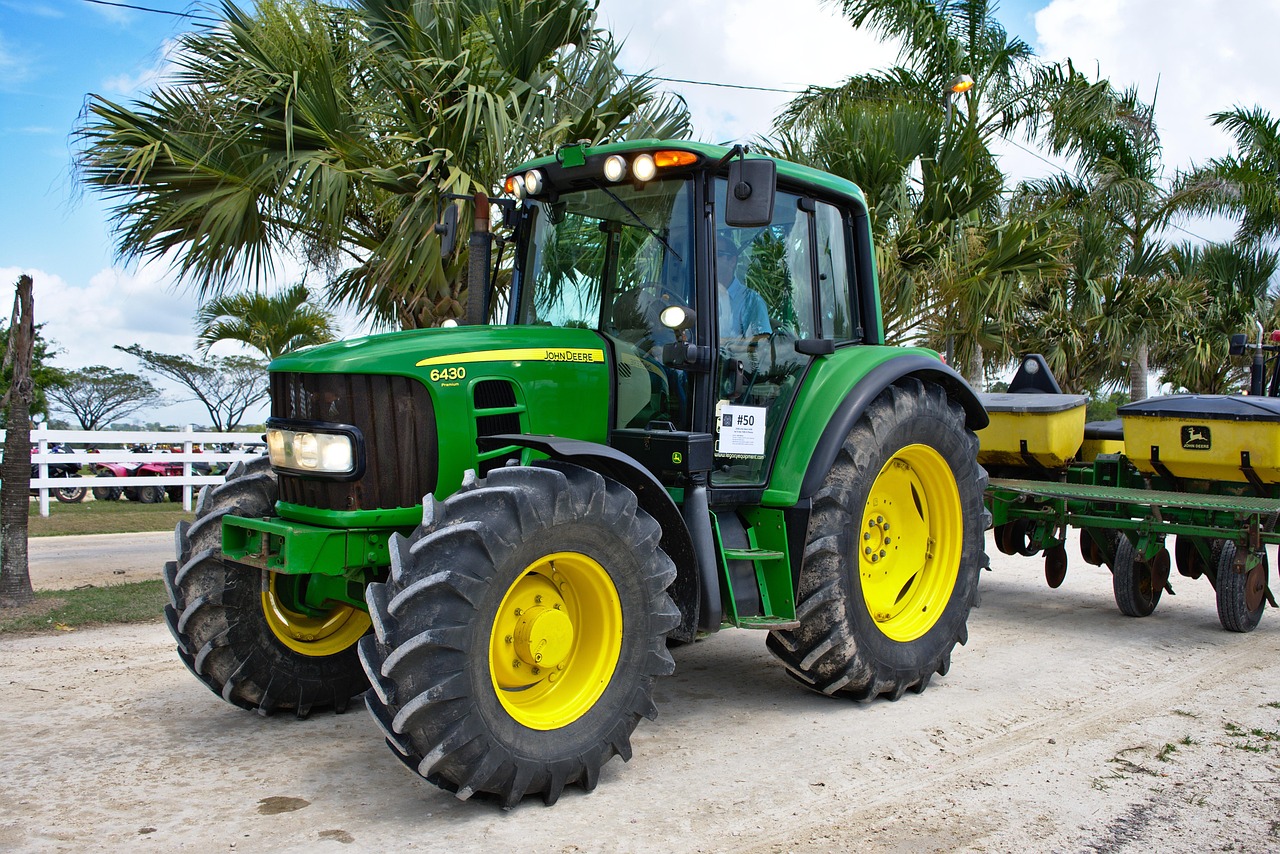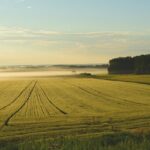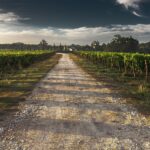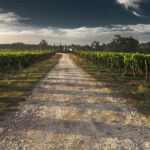Efficient irrigation systems for farms near Oregon: Southeastern Oregon is also impacted by the water cycle shortages.
Economic Implications, etc
A Shared Responsibility: Securing the Future of the Great Basin
The Great Basin, a vast and arid region in the western United States, faces a critical water challenge. As climate change intensifies, water scarcity threatens the region’s delicate ecological balance and the livelihoods of its inhabitants.
The Challenge:
The Great Basin is characterized by limited precipitation and high evaporation rates, making water a precious and scarce resource. This inherent aridity is compounded by the effects of a changing climate, resulting in prolonged droughts and increased demand for water resources.
A Call to Action:
Addressing this water crisis requires a collective effort. By embracing sustainable practices, investing in innovative technologies, and fostering collaborative partnerships, we can secure the future of the Great Basin. This includes:
- Water Conservation: Implementing water-efficient irrigation practices, promoting water-wise landscaping, and reducing household water consumption are vital steps.
- Technological Innovation: Investing in research and development of water-saving technologies, such as drought-resistant crops, advanced desalination techniques, and water reuse systems, is crucial.
- Collaborative Solutions: Building bridges between communities, government agencies, and stakeholders to develop comprehensive water management strategies is essential.
The future of the Great Basin depends on our collective commitment to responsible water stewardship. By embracing these actions, we can create a more resilient and sustainable region for generations to come.
💦 The Great Basin: Where Water Takes a Desert Journey
TL;DR – Too Long; Didn’t Read
The Great Basin is a dry region facing a big water problem. Climate change is making things worse, and water is getting scarce. To fix this, we need to save water, use it wisely, and think of new ways to grow food. There are groups like Climate Rescue working hard to find solutions.
A Desert’s Water Cycle: A Journey of Evaporation and Drought
Imagine a giant, thirsty sponge soaking up water from the sky. That’s kind of like the Great Basin, a region in the western United States where most of the water evaporates before it can flow to rivers or lakes. This is why the Great Basin is mostly desert! The water cycle here is different from other places, with less rain and more evaporation.
The water journey starts with snowfall in the mountains. This snow melts in the spring, providing a crucial source of water for the region. But as summers get hotter, more water evaporates from the soil and lakes, leaving behind dry land.
Southeastern Oregon is also part of this story, as it faces the same challenges of a dry climate and water scarcity.
Water Shortages: A Growing Problem in the Great Basin
Because the Great Basin is so dry, water is precious and scarce. This means that there isn’t enough water to meet the needs of people, farms, and wildlife. Climate change is making this problem worse, with less snow falling in the mountains and hotter summers causing faster evaporation. This means there’s less water available for everyone.
The Impact of Water Shortages: A Balancing Act
Water scarcity impacts everything in the Great Basin. Farmers struggle to grow crops, and people have to conserve water in their homes. Wildlife also suffers, as their habitats dry up.
The Great Basin’s water problem also affects its economy. Farmers can’t grow as much food, and businesses may have to close because of water restrictions.
Saving Water: Solutions for a Thirsty Region
To overcome the challenges of water scarcity, we need to take action! Here are some solutions:
H3 – Water Conservation: Using Less is More
- Efficient irrigation systems: Using drip irrigation instead of flood irrigation saves water and helps plants grow better.
- Water-wise landscaping: Choosing plants that need less water can make a big difference in our yards and communities.
- Household conservation: Taking shorter showers, fixing leaky faucets, and using water-saving appliances can all help.
H3 – Innovative Irrigation: Farming Smarter
- Smart irrigation systems: These systems use sensors to measure soil moisture and only water when needed, saving water.
- Drought-resistant crops: Growing crops that are better adapted to dry conditions can reduce the need for extra water.
H3 – Policy and Collaboration: Working Together
- Water management plans: These plans help to make sure that there is enough water for everyone, even during dry times.
- Public awareness campaigns: Educating people about the importance of water conservation is key to changing behavior.
- Collaborative efforts: Organizations like the Active Climate Rescue Initiative are working to solve the water shortage problem in the Great Basin. They are bringing together scientists, engineers, and community members to find innovative solutions.
A Shared Responsibility: Solving the Water Crisis Together
The Great Basin’s water problem is a serious challenge, but it’s also a chance for us to work together to protect this important region. By using water wisely, investing in new technologies, and working together to find solutions, we can help the Great Basin thrive, even in a changing climate.
More on Efficient irrigation systems for farms…
- ## SEO Keywords: Efficient Irrigation Systems for Farms & Economic Implications
- General:
- Efficient irrigation systems
- Farm irrigation technology
- Water-saving irrigation
- Smart irrigation systems
- Sustainable irrigation practices
- Precision irrigation
- Irrigation optimization
- Irrigation efficiency
- Water conservation in agriculture
- Agricultural water management
- Economic Implications:
- Irrigation cost savings
- Farm profitability
- Water usage cost reduction
- Crop yield enhancement
- Reduced water footprint
- Improved farm sustainability
- ROI of irrigation systems
- Economic impact of irrigation efficiency
- Cost-benefit analysis of irrigation technology
- Environmental benefits of efficient irrigation
- Specific Irrigation Technologies:
- Drip irrigation
- Micro-irrigation
- Sprinkler irrigation
- Subsurface irrigation
- Water-saving irrigation methods
- Automated irrigation control
- Sensor-based irrigation
- Irrigation scheduling software
- Irrigation system design
- Irrigation equipment
- Crop-Specific:
- Irrigation for [specific crop]
- Water management for [specific crop]
- Efficient irrigation of [specific crop]
- [Specific crop] yield optimization
- [Specific crop] water usage reduction
- Regional:
- Irrigation in [specific region]
- Water scarcity solutions for [specific region]
- Agricultural water management in [specific region]
- [Specific region] farm irrigation technology
- Target Audience:
- Farmers
- Agriculture professionals
- Agricultural businesses
- Irrigation contractors
- Water management consultants
- Government agencies
- Long-Tail Keywords:
- Best irrigation systems for [specific crop] in [specific region]
- How to reduce irrigation costs on my farm
- Benefits of efficient irrigation for farm profitability
- How to choose the right irrigation system for my farm
- Cost of installing an efficient irrigation system
- Funding options for efficient irrigation systems
- Question-Based Keywords:
- What are the benefits of efficient irrigation systems?
- How can I save money on irrigation?
- What are the best irrigation technologies for my farm?
- How can I improve my farm’s water management?
- What are the economic implications of efficient irrigation?




